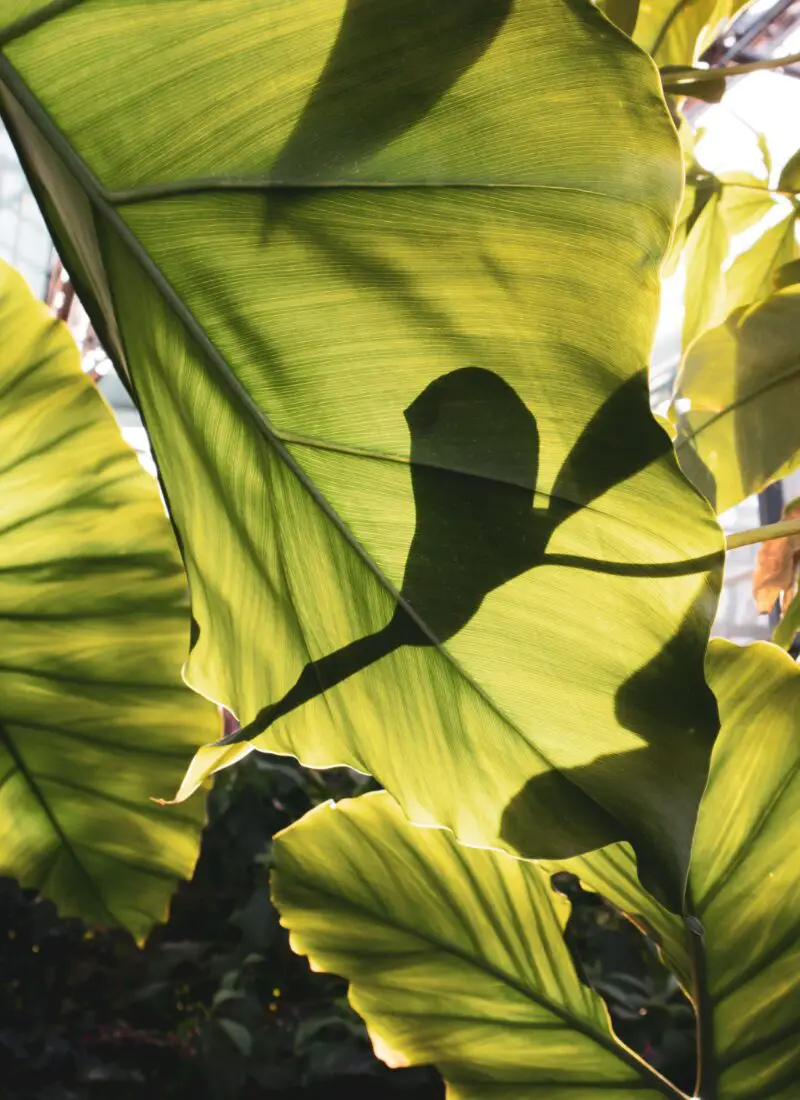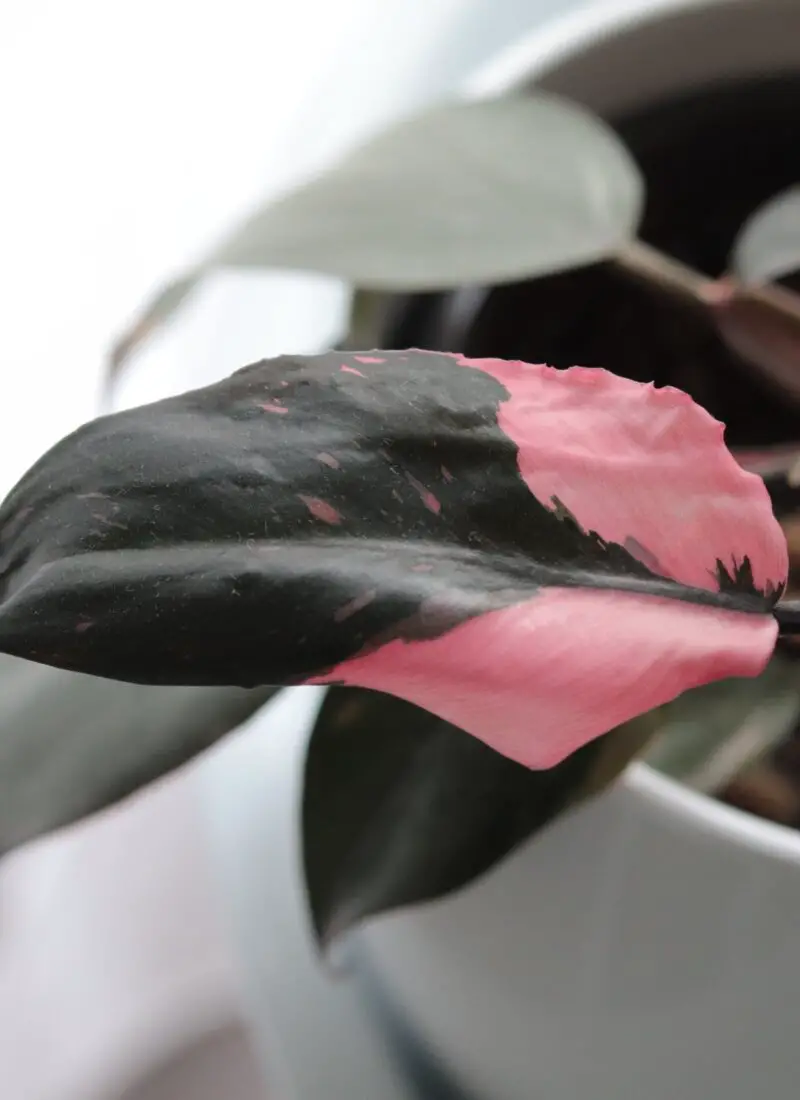
A Peace lily’s flowers are the focal point of the plant. It can be disappointing to see them turning brown, but, you’re not necessarily doing anything wrong.
As a whole, Peace lily flowers turn brown due to natural aging/or and improper care. Its white color changes after 10-14 days as part of its flower cycle. However, the latter is fixable. Provide the plant with indirect sunlight, weekly watering, and light fertilizing every two months.
Below, I elaborate more on the plant’s bloom cycle, other browning causes, and additional care tips:
(As an Amazon Associate, I earn from qualifying purchases.)
Table of contents
Why Are My Peace Lily Flowers Turning Brown?
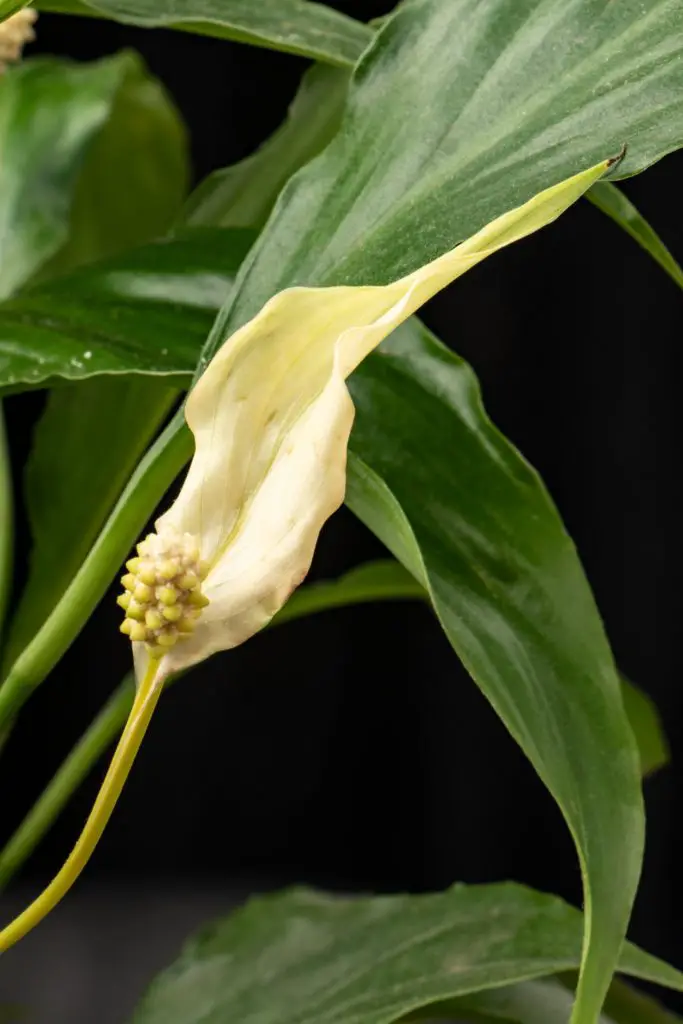
Before we get into this, you first need to know that the prominent white flower of a Peace Lily is not the true flower. The single white petal-like sheath is a modified leaf called a spathe. It surrounds and protects the bumpy stalk in front of it called a spadix, the plant’s actual flower. To make things easier for everyone reading, I’ll primarily refer to the spathe as “the peace lily flower” in my explanations.
One of the most common reasons for peace lily flowers to turn brown is simply because they are aging. As peace lilies mature, the flowers bloom from a green to vibrant white color. It stays white for about 10-14 days before turning green again and eventually wilt and brown. This is normal and nothing to be concerned about – it’s just a natural part of the plant’s life cycle. But suppose you find that the flower stays unusually green for too long. In that case, this could mean the plant is either overfertilized or receiving too much sunlight. Hold off on the fertilizing for a bit and move the plant to a shaded area to help improve the flowers’ color.
However, there are also some cases where peace lily flowers turn brown because of stress from improper care. For example, say the plant is not getting enough water. They will immediately shift gears and redirect their energy to try and survive this drought-like condition. As a result, the flowers turn brown because the plant is trying to conserve as much energy as it can to save the foliage and roots. It’s kind of like us as humans. If we forget to drink water the whole day, we end up light-headed and unfocused. Our bodies are working as best as they can with what they have so that we don’t just drop dead. The lesson of the day: stay hydrated – both for you and your plants!
Generally, if the plant lacks its basic needs to begin with, it won’t bloom in the first place. If you were lucky enough to get flowers, the plant is just having some trouble keeping them. All you have to do is check what is lacking in the plant’s needs, adjust it, then boom! Your peace lily is back in blooming business.
How long does a Peace Lily bloom last?
As a whole, a peace lily flower (the spadix) lasts about a month, but the white sheath-like petal (the spathe) changes color after 10-14 days. Once it turns brown, the blossom will eventually fall off the plant. However, this doesn’t mean that your peace lily is dying – it will simply produce new flowers in time. If you want your peace lily to bloom again, it’s important to care for it properly and keep an eye on the plant’s health.
However, there is an exception to this rule. If your peace lily still hasn’t bloomed in a long time despite giving it the best care, it’s likely because it’s still too young. Now I’m about to tell you something that will probably upset you but take a deep breath and brace yourself …
Peace lilies are often sprayed with a natural plant hormone called gibberellic acid to induce flowering before selling them off. This means that once the blooms die off, it may take a year or two before they’ll start flowering again because it needs to mature first. In some cases, you may not even get a lot of blooms as you did when you first bought the plant. I know; it’s kind of a punch in the gut.
Another thing is that a small percentage of peace lilies that are forced to bloom with the spray end up developing distorted flowers. I mean, if you’re being forced to do something you’re naturally not ready for, you’re going to come out with something a little funky. But the good news is that this practice doesn’t affect the plant’s fertility to produce blooms naturally. You’re just in for the long wait for those flowers to start popping up.
How Do I Keep My Peace Lily Flowers From Turning Brown?
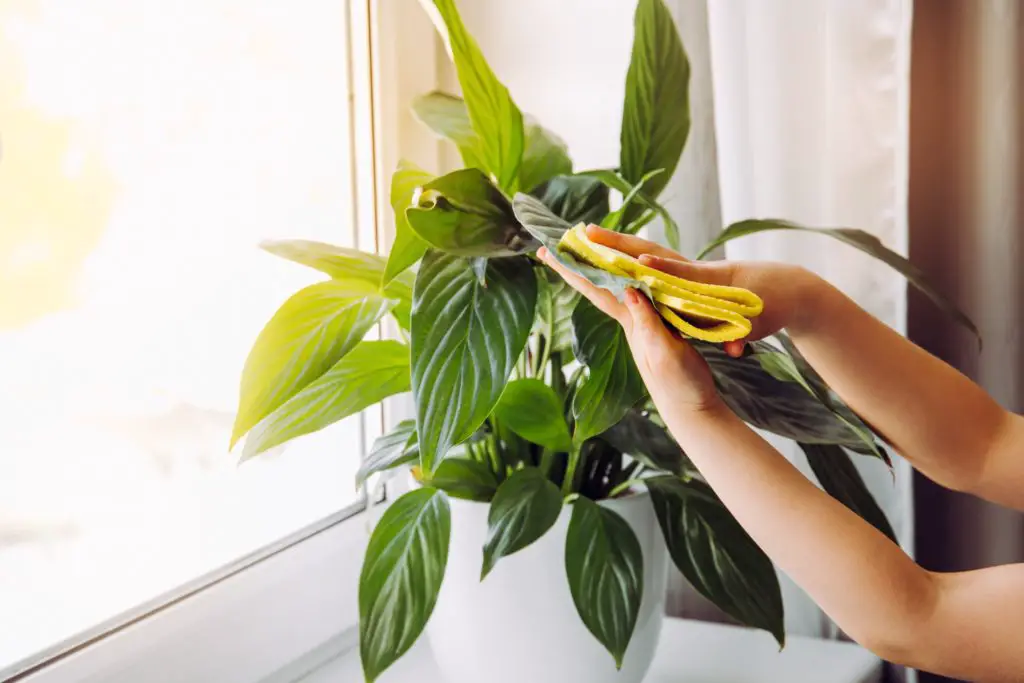
If your peace lily flowers are turning brown due to improper care, it’s just a matter of addressing their needs. Here are the plant’s basic needs in order to grow flowers:
- Provide plenty of bright, indirect sunlight. Although, the plant is known to tolerate shade or low-light conditions. This will slow down its growth and may even produce fewer blooms.
- Plant in a well-draining and nutrient-rich soil. The plant is not particularly picky about its soil type. So a standard potting mix is more than adequate for it.
- Water weekly after the top 1-2 inches of soil has dried. Peace lilies thrive best in consistently moist but not soggy soil. Do the knuckle test or use a moisture meter (Amazon link) to check the soil first to prevent overwatering. Where possible, use filtered, distilled, or rainwater at room temperature. The plant is pretty sensitive to high mineral concentrations in tap water. If you do have hard water, these high mineral concentrations will make your plant sulk harder than a koala without a eucalyptus tree.
- Fertilize sparingly at less than the recommended dose once every two months. It’s best to give about a quarter of the supposed dosage to be on the safe side. The plant doesn’t need much to grow well, but it’s helpful to top up the nutrients in the soil now and then.
- Keep the surrounding temperatures warm at 68-85°F/20-30°C. If it gets below 60°F, peace lilies will suffer chill damage and have a hard time bouncing back. This is a tropical plant, so you must be extra mindful of its needs if you live in cold regions.
- Repot once every 1-2 years during the growing season in spring. Leaving it to get rootbound may benefit in keeping it small, but it’ll eventually cause problems to its overall growth.
- Clean leaves with a damp cloth weekly to get rid of dust. This simple maintenance helps prevent dirt build-up on the foliage, which may affect efficient sun absorption for photosynthesis. It also allows you to check for lurking pests in the plant.
However, if the plant’s flowers are browning due to natural aging, then there isn’t much you can do but remove the blooms. It’s actually healthy for the plant! You’re doing it a big favor by cutting it off so it can focus more on growing as a whole than sustaining a dying flower.
Should I Trim The Brown Flowers Off My Peace Lily?
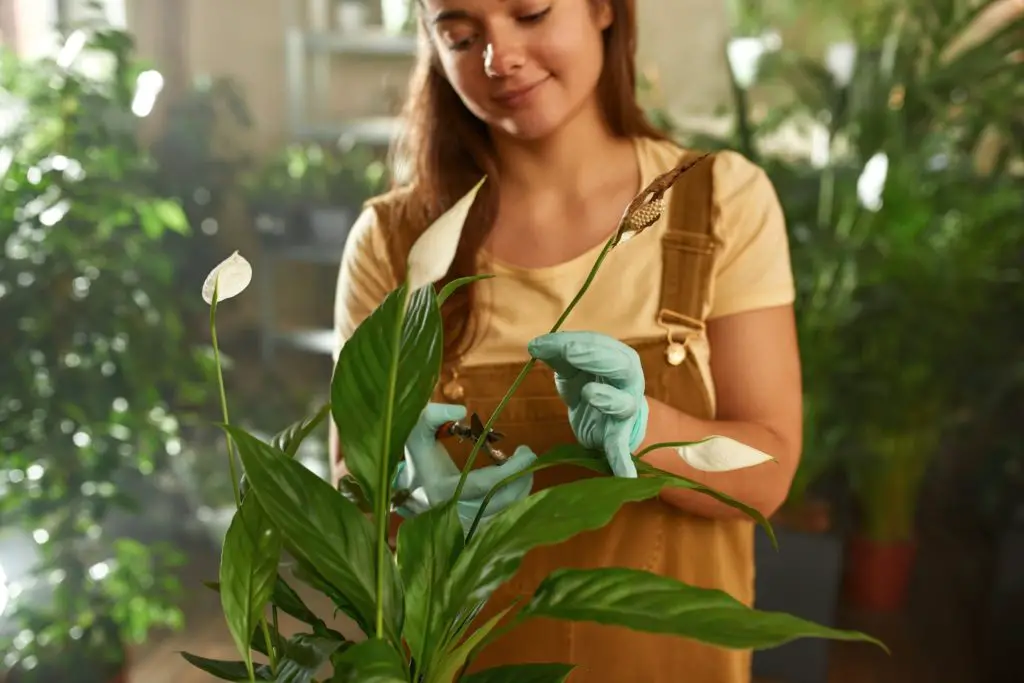
As mentioned in the previous section, it’s helpful to cut the brown flowers off your peace lily plant. When you do, ensure to use sharp, sterile shears or scissors. This will help prevent infection and encourage new growth. You can find the instructions on sterilizing your cutting tools in this article.
Once you’re ready, you must cut the entire flower, including its stem. You’ll find the end of the stem protruding from one of the plant’s lush leaves. Getting rid of the whole thing is generally better for the plant’s development and aesthetic. Leaving behind just a sad, flowerless stem is not exactly pretty, so you’re better off without the whole thing. Besides, you’ll have new blooms coming in a few months or next spring again anyway. Make room for change, and leave the past in the past.
Here’s a helpful video on how to remove the brown flowers from your peace lily plant:
Frequently Asked Questions about a Peace Lily Plant
As a general rule, weekly watering after the top 1-2 inches dries out will help Peace Lilies grow better. It’s also best to use rainwater or filtered water instead of tap water which may have high mineral content that is harmful to the plant. It’s also important to check whether the soil is dry prior to watering using the knuckle test or a moisture meter.
Dry soil is a good indication that a Peace Lily needs watering. However, in severe dehydration cases, the flowers may turn brown or the leaves droop. It’s usually best not to get it to this extent numerous times because it will eventually damage the plant. But once or twice is alright and the Peace Lily will easily bounce back from being underwatered than being overwatered.
Peace Lilies are best watered from the top to flush out any dissolved salt from the fertilizers. But bottom watering is also useful in ensuring a more even soil saturation. At the end of the day, it comes down to your preference. This top and bottom watering article can tell you a bit more about each practice.
Every 1-2 years, Peace Lilies benefit from repotting into a slightly larger pot to accommodate their growing roots. Typically, keeping them rootbound helps maintain their compact size but over time, this will cause difficulties in overall growth. Make sure to provide plenty of the plant’s basic care needs after the repotting process to ensure a swift recovery.
Brown tips and yellow droopy leaves are typical signs of an overwatered Peace Lily. In severe cases, they will have stem rot and a pungent odor coming from the soil, indicating root rot. These are usually too far gone for saving. The best way to quickly help your plant in the early stages is to quickly repot it into another pot with dry soil blend. If it doesn’t look like it’s bouncing back several months later, it’s best to discard the plant.
Final Words
With that, I hope this gives you a better idea of why peace lily flowers turn brown. Remember, the blooms aren’t meant to last long, so it’s best to appreciate them once they flower. Everything is better enjoyed when you’re living in the moment. Happy planting!
References:
https://plants.ces.ncsu.edu/plants/spathiphyllum/
https://gardeningsolutions.ifas.ufl.edu/plants/houseplants/peace-lily.html
https://hgic.clemson.edu/factsheet/peace-lily/
https://edis.ifas.ufl.edu/publication/EP320
https://edis.ifas.ufl.edu/pdf%5CEP%5CEP447%5CEP447-D17fr0mmq7.pdf
https://www.uaex.uada.edu/yard-garden/resource-library/plant-week/peace-lily.aspx


